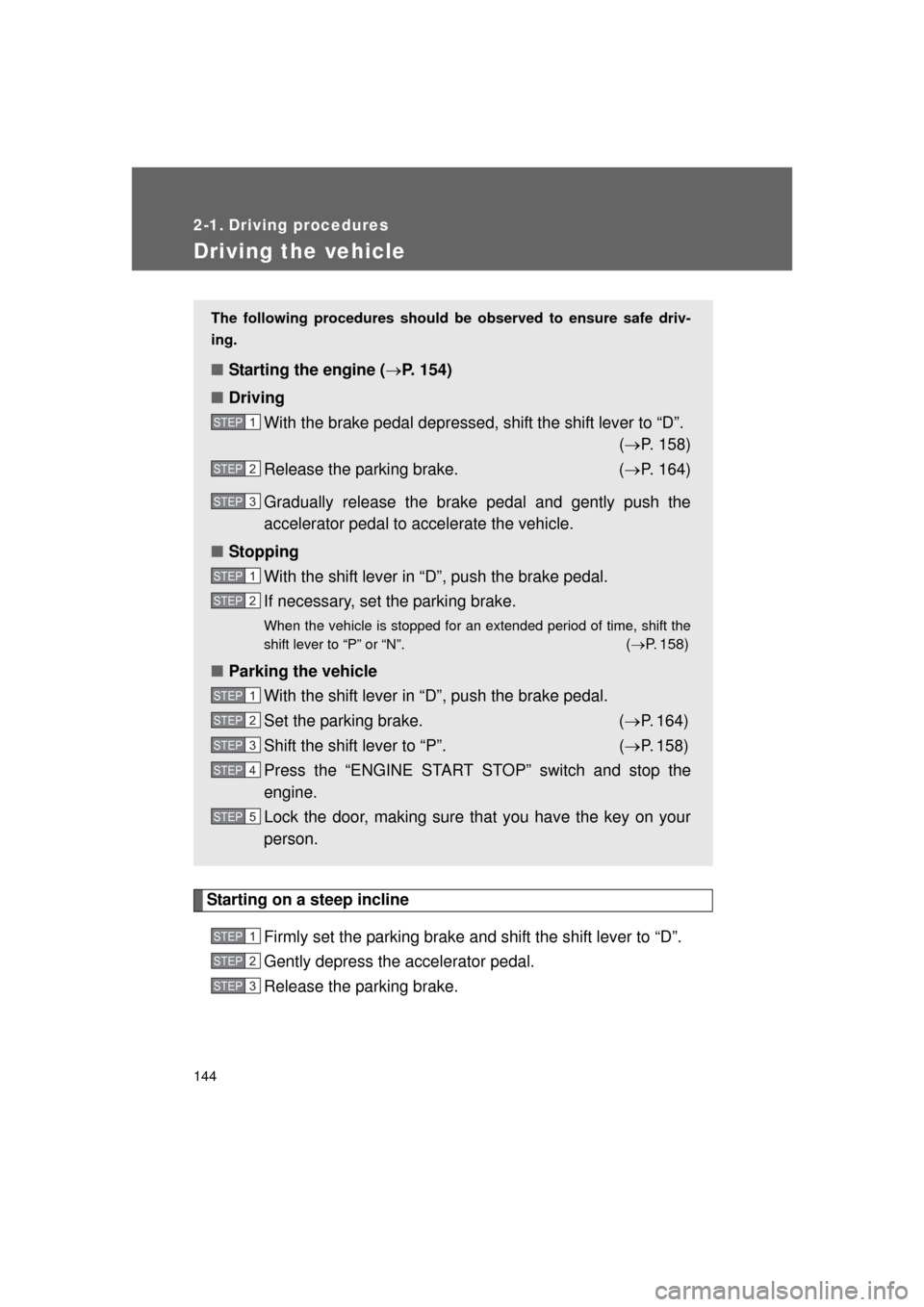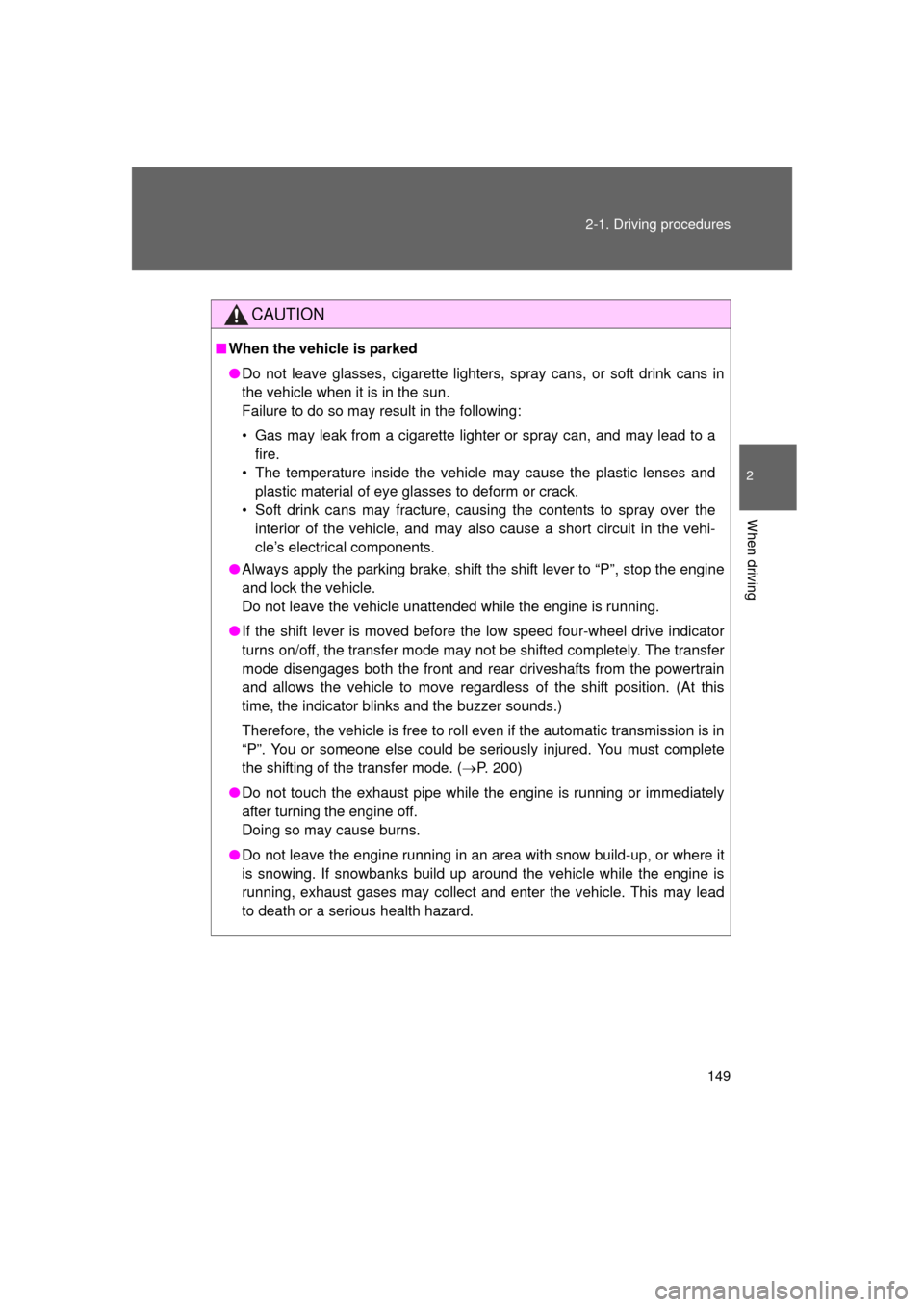Page 134 of 608
134 1-7. Safety information
L/C200_U (OM60F74U)Fully extend the shoulder belt
and then allow it to retract
slightly in order to activate the
ALR lock mode.
Lock mode allows the seat belt to
retract only.
While pushing the child restraint
system down into the seat, allow
the shoulder belt to retract until
the child restraint system is
securely in place.
After the shoulder belt has
retracted to a point where there is
no slack in the belt, pull the belt to
check that it cannot be extended.
STEP4
STEP5
Page 135 of 608
135
1-7. Safety information
1
Before driving
L/C200_U (OM60F74U)
■
Forward-facing Convertible seat
Fold the seatback while pulling
the seatback angle lever.
Return the seatback and secure
it at the first lock position.
( P. 53)
Place the child restraint system
on the second or third seat fac-
ing the front of the vehicle.
Run the seat belt through the
child restraint system and insert
the plate into the buckle. Make
sure that the belt is not twisted.
STEP1
STEP2
STEP3
Page 136 of 608
136 1-7. Safety information
L/C200_U (OM60F74U)Fully extend the shoulder strap
and then allow it to retract
slightly into the ALR lock mode.
Lock mode allows the seat belt to
retract only.
While pushing the child restraint
system into the seat, allow the
shoulder belt to retract until the
child restraint system is securely
in place.
After the shoulder belt has
retracted to a point where there is
no slack in the belt, pull the belt to
check that it cannot be extended.
If the child restraint system has a top tether strap, the top
tether strap should be latched onto the top tether strap
anchor. (
P. 131)
STEP4
STEP5
STEP6
Page 137 of 608
137
1-7. Safety information
1
Before driving
L/C200_U (OM60F74U)
■
Booster seat
Fold the seatback while pulling
the seatback angle lever.
Return the seatback and secure
it at the first lock position.
( P. 53)
Place the child restraint system
on the seat facing the front of the
vehicle.
Sit the child in th e child restraint
system. Fit the seat belt to the
child restraint system according
to the manufacturer’s instruc-
tions and insert the plate into the
buckle. Make sure that the belt is
not twisted.
Check that the shoulder belt is
correctly positioned over the
child’s shoulder, and that the lap
belt is as low as possible.
( P. 70)
STEP1
STEP2
STEP3
Page 140 of 608
140 1-7. Safety information
L/C200_U (OM60F74U)
■Laws and regulations pertaining to anchorages
The LATCH system conforms to FMVSS225.
Child restraint systems conforming to FMVSS213 specifications can be
used.
This vehicle is designed to conform to the SAE J1819.
CAUTION
■When installing a booster seat
Do not fully extend the shoulder belt to prevent the belt from going to ALR
lock mode: ( P. 73)
ALR mode causes the belt to tighten only which could cause injury or dis-
comfort to the child.
Page 142 of 608

142 1-7. Safety information
L/C200_U (OM60F74U)
CAUTION
■When installing a child restraint system
● Ensure that the belt and tab are securely locked and the seat belt is not
twisted.
● Push and pull the child restraint system from side to side and forward to be
sure it is secure.
● After securing a child restraint system, never adjust the seat.
● Follow all installation instructions provided by the child restraint system
manufacturer.
■ Do not use a seat belt extender
If a seat belt extender is used when installing a child restraint system, the
seat belt will not securely hold the child restraint system, which could cause
death or serious injury to the child or other passengers in the event of a sud-
den stop, sudden swerve or accident.
■ To correctly attach a child r estraint system to the anchors
When using the LATCH anchors, be sure that there are no foreign objects
around the anchors and that the seat belt is not caught behind the child
restraint system. Make sure the child restraint system is securely attached,
or it may cause death or serious injury to the child or other passengers in the
event of a sudden stop, sudden swerve or accident.
Page 144 of 608

144
L/C200_U (OM60F74U)
2-1. Driving procedures
Driving the vehicle
Starting on a steep inclineFirmly set the parking brake and shift the shift lever to “D”.
Gently depress the accelerator pedal.
Release the parking brake.
The following procedures should be observed to ensure safe driv-
ing.
■ Starting the engine ( P. 154)
■ Driving
With the brake pedal depressed, shift the shift lever to “D”. ( P. 158)
Release the parking brake. ( P. 164)
Gradually release the brake pedal and gently push the
accelerator pedal to accelerate the vehicle.
■ Stopping
With the shift lever in “D”, push the brake pedal.
If necessary, set the parking brake.
When the vehicle is stopped for an extended period of time, shift the
shift lever to “P” or “N”.
(P. 158)
■ Parking the vehicle
With the shift lever in “D”, push the brake pedal.
Set the parking brake. ( P. 164)
Shift the shift lever to “P”. ( P. 158)
Press the “ENGINE START STOP” switch and stop the
engine.
Lock the door, making sure that you have the key on your
person.
STEP1
STEP2
STEP3
STEP1
STEP2
STEP1
STEP2
STEP3
STEP4
STEP5
STEP1
STEP2
STEP3
Page 149 of 608

149
2-1. Driving procedures
2
When driving
L/C200_U (OM60F74U)
CAUTION
■
When the vehicle is parked
● Do not leave glasses, cigarette lighters, spray cans, or soft drink cans in
the vehicle when it is in the sun.
Failure to do so may result in the following:
• Gas may leak from a cigarette lighter or spray can, and may lead to a
fire.
• The temperature inside the vehicle may cause the plastic lenses and plastic material of eye glasses to deform or crack.
• Soft drink cans may fracture, causing the contents to spray over the interior of the vehicle, and may also cause a short circuit in the vehi-
cle’s electrical components.
● Always apply the parking brake, shift the shift lever to “P”, stop the engine
and lock the vehicle.
Do not leave the vehicle unattended while the engine is running.
● If the shift lever is moved before the low speed four-wheel drive indicator
turns on/off, the transfer mode may not be shifted completely. The transfer
mode disengages both the front and rear driveshafts from the powertrain
and allows the vehicle to move regardless of the shift position. (At this
time, the indicator blinks and the buzzer sounds.)
Therefore, the vehicle is free to roll even if the automatic transmission is in
“P”. You or someone else could be seriously injured. You must complete
the shifting of the transfer mode. ( P. 200)
● Do not touch the exhaust pipe while the engine is running or immediately
after turning the engine off.
Doing so may cause burns.
● Do not leave the engine running in an area with snow build-up, or where it
is snowing. If snowbanks build up around the vehicle while the engine is
running, exhaust gases may collect and enter the vehicle. This may lead
to death or a serious health hazard.